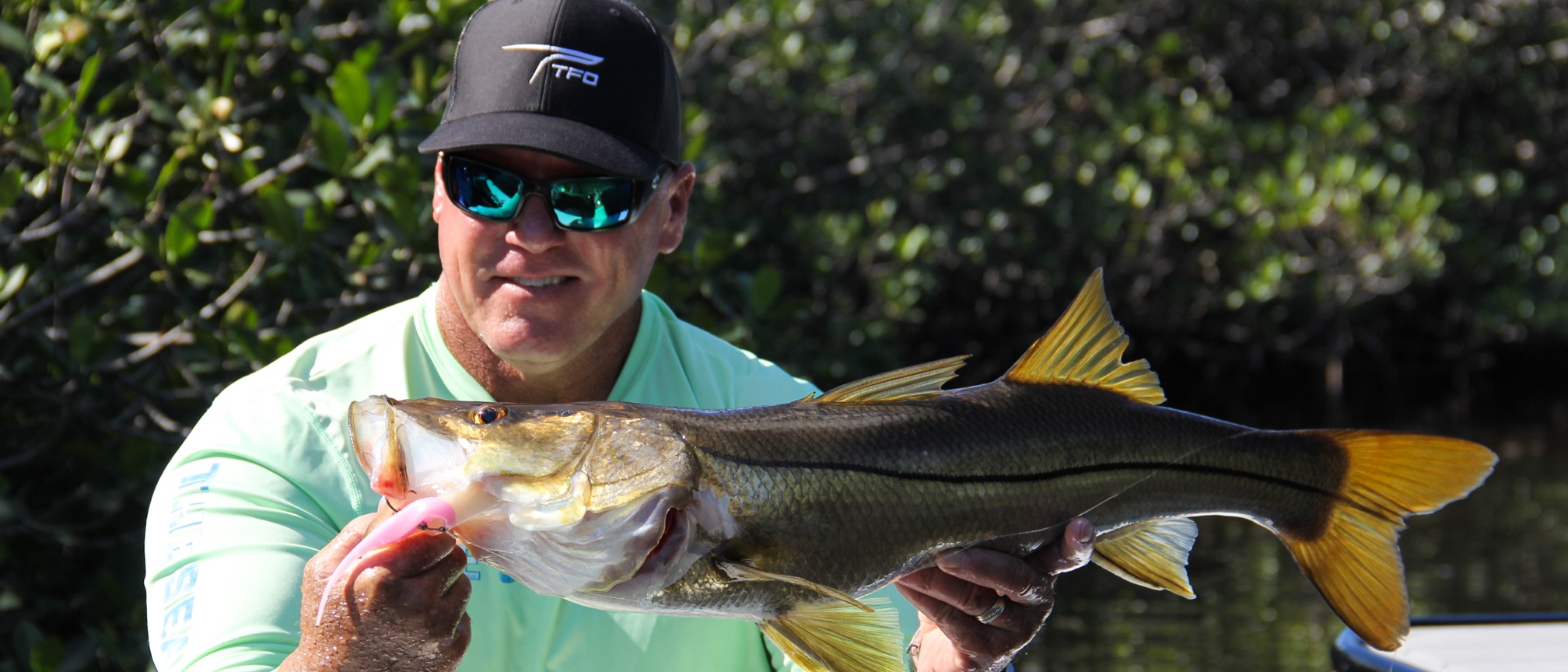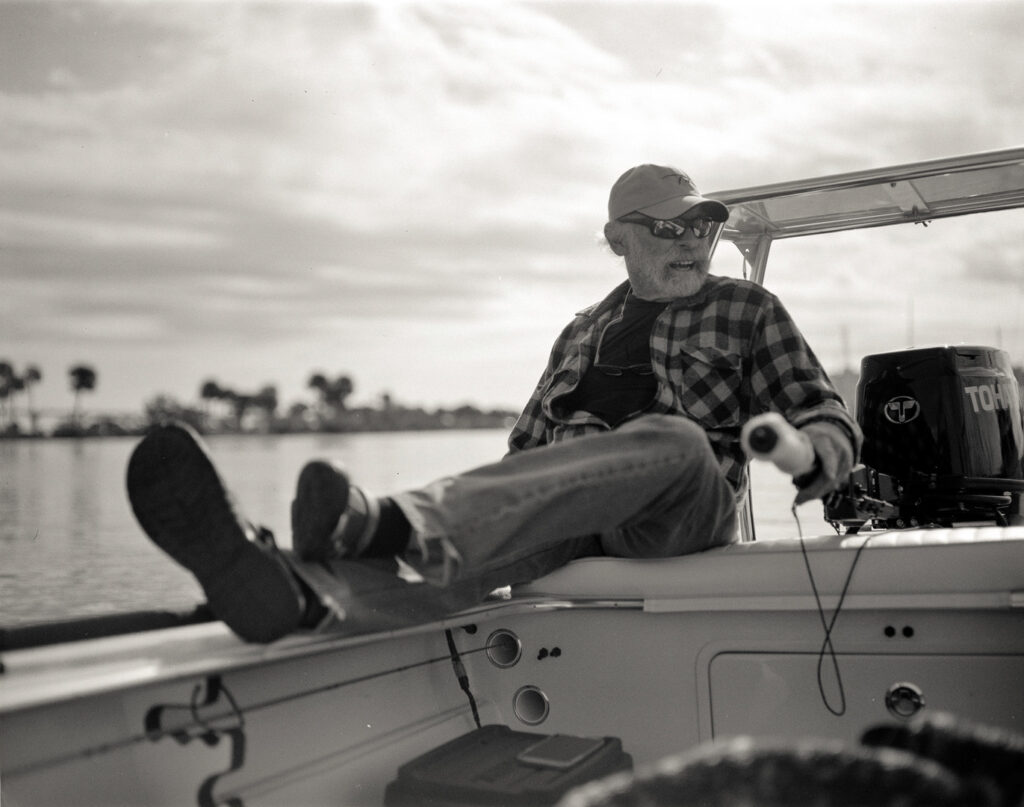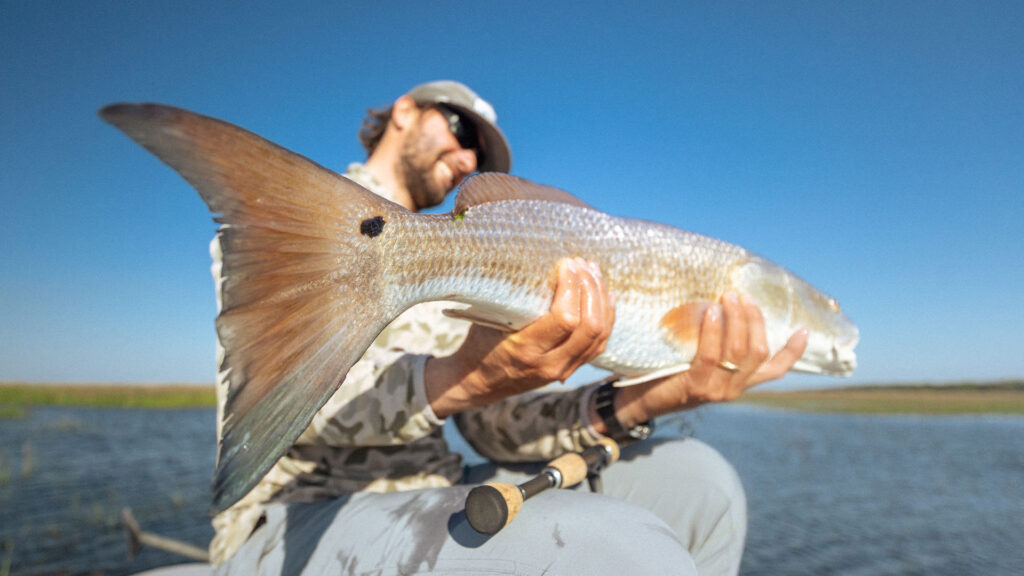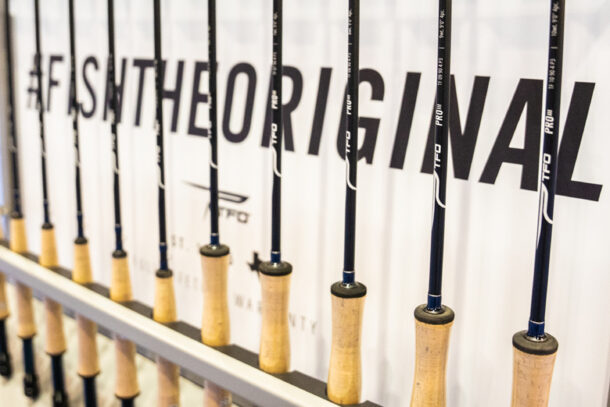TFO blog editor Mike Hodge caught up with TFO advisor and television host Rob Fordyce for a few minutes after the Florida Keys guide finished up working the Miami Boat Show. We discussed a number of topics, everything from outdoors television to University of Tennessee baseball. Enjoy.
How did you get started in TV?
RF: “Actually the first experience I had with television was in 1991 with (TFO’s) Flip Pallot, a friend of mine, who had a show called the Walker’s Chronicles. And he asked me to be a camera boat for him for the first episode of that whole series. And after we did that episode, the show took off. Shortly thereafter, he asked me to do a couple episodes with him in front of the camera, not in the camera boat, but as a co-host. Things went on from there, and I did a lot of shows with a good friend of mine, Jose Wejebe, who was one of my best friends. Shortly before Jose passed in a tragic plane accident, he decided after a 13 years of being in front of the camera that he wanted to be behind the camera and produce, and he asked me to host his show. That didn’t ever come to be, because of the plane accident. The same crew we were going to move forward with to host that show decided that since Jose thought enough of me to host his show, that maybe I should pursue this opportunity myself and that’s what we did. That’s kind of where we’re at now.”
So Seahunter evolved out of your involvement with Jose, correct?
RF: “That’s basically it.”
What’s your favorite part of television, being a television host and being in front of the camera?
RF: “Several things, being a co-host with other people’s shows, I didn’t really have a say. The show didn’t have my personality so to speak, my efforts, my view of how that story should have been told. What I’ve really enjoyed about the Seahunter show, I produce it and the final episode you end up seeing is how I wanted that story to be related to the viewer. It’s a very cool process to go out and do the fishing part. And then when you take the footage, with the fishing part, back in the studio and start editing that and start telling a story and basically taking the viewer on an adventurous ride, it’s really fun to do that whole process.”
What do you think the biggest misconception is from people on the outside, who are not involved in the television process? From the viewers? The public? Other anglers?
RF: “One thing that I run into on a regular basis is I tell people I have to go to work tomorrow. They laugh and say, ‘You’re just going fishing. You’re not going to work.’ I don’t think people understand, whether you’re guiding or filming a TV show, how much work is really involved. There’s a difference when you’re fishing for fun and when you’re paying up to $10,000 a day to shoot a fishing show. You’re paying all these camera guys and for all the fuel and all that kind of stuff, there’s a lot of pressure to make that happen. One of the biggest misconceptions is I don’t fish for a living; I take people fishing for a living, whether it’s on film or as a customer on the bow of my boat, as a guide.”
You live in the Keys now, correct?
RF: “I actually live in Homestead, the last town before you enter the Keys. Most of my fishing is in the Keys and the Everglades.”
Do you have a favorite episode of Seahunter? I remember the one with Chico Fernandez. …
RF: “The most memorable was the one I did with (fellow TFO advisor) Flip Pallot. Flip was a mentor of mine going back to when I was 10 years old, when we started fishing together. And my first TV experience was fishing with Flip on his TV show. It was coming around full circle when I invited him to be on my show. I think it was an emotional experience for him, too, to be part of that circle. Flip and I are great friends. He’s like a brother to me. Though I’ve had other episodes where I thought the fishing was more cool, that is definitely one I’m most proud of.”
I read in your bio that you’re an athlete? What sport do you compete in?
RF: “I grew up as an athlete. I don’t compete now. I do get up and work out five days a week in the weight room, 4, 4:30, five o’clock in the morning before I go fishing. That’s a carryover from competing earlier in sports. I went to the University of Tennessee on a baseball scholarship. Before the baseball scholarship, I had a full ride to Florida State for football, but I injured my neck before I could make that happen, so I always played football and baseball. I went to Tennessee and played there a couple of years. … Going back to the sports thing, one thing that’s allowed me to be successful as a fisherman and TV host is I’ve always pushed myself. Every day is a competition with me. I always try to learn more and become better at what I’m doing. I’ve never been satisfied with my knowledge of the game. I think that stems from being pretty serious about sports in my youth.”
Where are you from originally?
RF: “I was born in Miami, so I’m a native South Floridian.”
Back to the fishing. What is your preferred type of fishing?
RF: “If my last day to fish was tomorrow, and it was my last opportunity, I would take a big fly rod, go down to the Keys and fish for giant tarpon, in clear water.”
How long have you been with TFO?
RF: “I want to say more than 10 years, 12 years going back to where there wasn’t any conventional. It was just a fly company.”
Who was your connection to the company?
RF: “I’ve known (TFO Chairman) Rick Pope for 25 years. We’ve been very good friends. The only reason I wasn’t with TFO from the inception was because I was with a couple other companies for a couple years. Once those contracts ended, I immediately called Rick and he accepted me on as an advisor and I’ve been thankful ever since. I’ve been working with TFO hand-in-hand the last 10 years or so making some pretty cool stuff.”
Describe your relationship with TFO, how it’s helped you and maybe how you’ve helped them?
RF: “I’m fortunate I was able to work with some other companies before I went to work with TFO. I was used to the normal where you give the company a lot of input. It’s up to them whether they take it or not. Some companies do not use their advisory staff to the fullest extent. TFO is the opposite of that. What separates TFO from everyone else is you take their advisory staff and the amount of years those people have been professional fishermen, and it’s hundreds of years of experience behind every rod that you use that says TFO on it. I think that’s something that not everyone realizes when they go into a tackle shop and see a rod with TFO on it. When they look at that rod, there’s hundreds of years of experience in building that rod.”
Any TFO rod that you’re particularly fond of by any chance?
RF: “My favorite until lately was the BVK series. Since the A2 (Axiom II) has come out, I like it the best. I still like the BVKs, but I love the A2s.”
What do you like the best about them?
RF: “I’m kind of a fast-rod caster. It allows you, although it’s not as fast as the BVK, for the short game. We deal with so many quick casts in sight fishing that you don’t always have time to get 30 feet of line out of your rod tip. I think the rod, as a tool, is a good all-around tool. I really like the rod. It does everything well. It casts short and long. If you overpower it, it doesn’t collapse. And when you get a fish on, it’s got plenty of backbone behind the butt to land a big fish quickly.”
Let us know what you think of the interview with Rob with a comment or two below. Your feedback is always welcomed.







